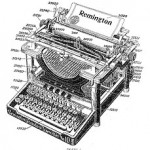
It is with great sadness that I tell you of the death of Russell Train, one of the Libraries’ major benefactors. Russell was a close friend of Joseph F. Cullman 3rd and it was Joe’s suggestion that brought Russell to us and ultimately resulted in his donation of the Russell E. Train Africana Collection, which resides in the Cullman Library. The donation was singular since it came with a full inventory of the collection, which he developed, including evaluations of individual items.






